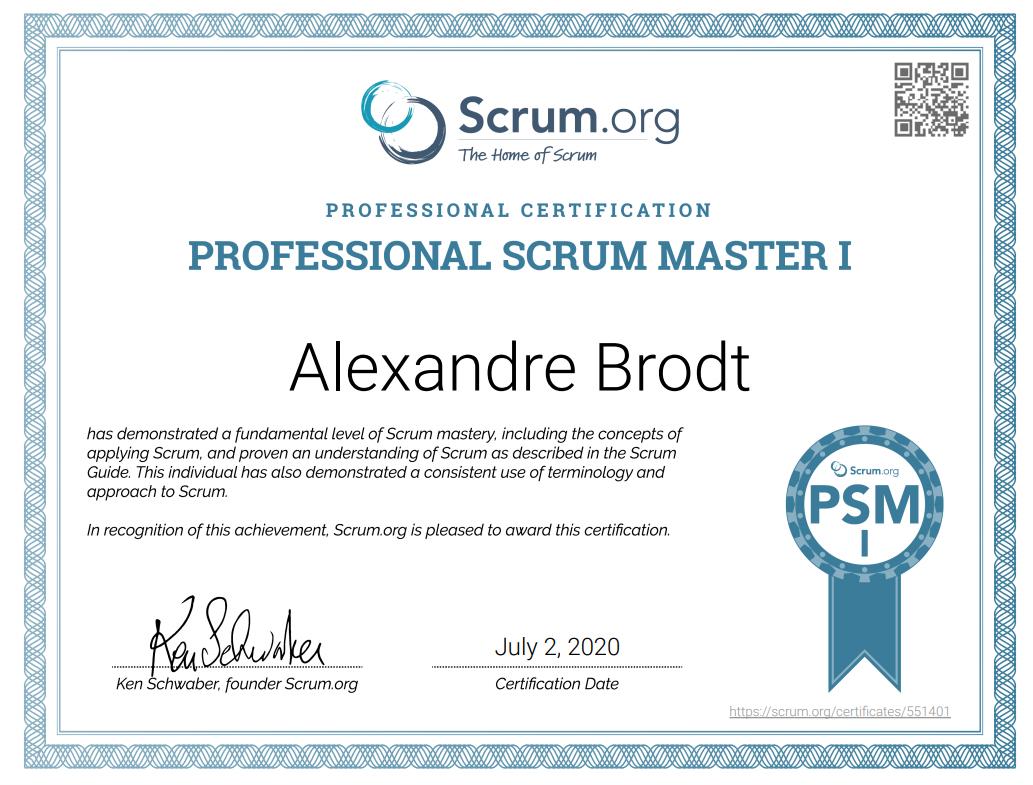Professional Scrum Master I (PSM I) certification: my experience and how I prepared
- 2 de julho de 2020

After some time away from exams, I decided to challenge myself again. That cold feeling in the stomach before clicking start is part of it, and seeing the approved on screen compensates. I leave my thanks to friends and colleagues with whom I exchange learning every day, and to Compass.uol for constant encouragement.

I chose PSM I from Scrum.org because it’s direct and respected. It validates Scrum’s foundation, empiricism theory, values and framework use to improve product and teams. There’s no trick, it’s fundamentals well understood and applied.
Before facing the exam, it’s worth knowing there are no prerequisites. You register and take the online exam when you think you’re ready. The essential is mastering the Scrum Guide and Scrum Glossary, because questions test the essence. Understand the why of each event, responsibility and artifact, always with transparency, inspection and adaptation as north. If when reading a question you think “it depends”, go back to the Guide. Almost always the answer is in the framework’s simplicity.
I treated preparation as a mini project. I defined a target date and a short daily routine. I read the Scrum Guide carefully, noting why each element exists. I went through the Glossary to align vocabulary. I did Scrum.org’s Open Assessments until getting consistent around 95 percent. I completed with good simulators, reviewing each mistake and explaining to myself the reason for the correct alternative. In the end, I made a light mind map with events, responsibilities, artifacts and commitments of the Increment and Definition of Done, Product Goal and Sprint Goal.
About the exam, the format is objective and to the point. Themes like Sprint Goal, Definition of Done, responsibilities, timeboxes, inspection and adaptation and what Scrum is not appear a lot. The helpful look is that of flow facilitator and empiricism guardian, not process boss.
The materials that helped me most were the Scrum Guide, Scrum Glossary, Open Assessments and my own notes. I kept focus on official content to reduce noise and gain depth.
If you want a quick roadmap, in two or three weeks you can get there well. First, active reading of Guide and Glossary. Then, Open Assessments every day and error review directly in the Guide. Finally, some focused simulators and a light review of events, responsibilities, artifacts and commitments. You can accelerate, as long as review is quality. Understanding is worth more than memorizing.
After approval, the most important part begins. Taking Scrum seriously is improving predictability, reducing waste and delivering value frequently. Share with the team, teach what you learned and keep evolving. If I can help in any way, just call.
More will come soon. Shall we go together? How can I help you?